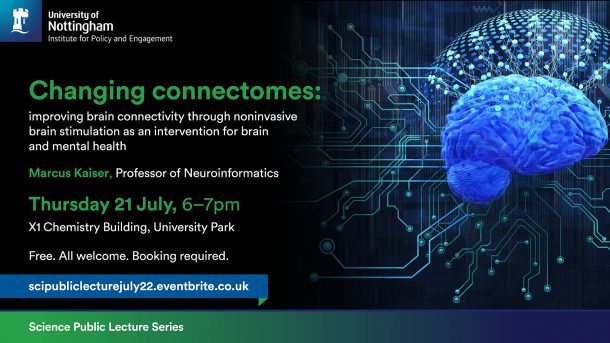Changing connectomes: improving brain connectivity

Join Professor Marcus Kaiser to learn more about non-invasive brain stimulation as an intervention for brain and mental health.
The complete set of connections in the brain is called our connectome. Over the last 20 years we have found out more about how this network is organised and how this organisation is linked to brain function.
For example, highly-connected brain regions (hubs) play critical roles in information processing and are involved in many brain diseases.
I will outline how networks change for a range of brain disorders, from networks that produce seizures for epilepsy to networks that produce hallucinations in certain types of dementia.
Given these changes, can we alter the structure of these networks and thereby improve cognition in patients?
Brain stimulation is an option to achieve this and has been proposed as an alternative treatment to pharmaceutical drugs with a potential to reduce side effects and improve cognitive function.
I will outline how computational models based on brain connectivity information can help to identify network targets and to find personalised stimulation protocols.
In particular, I will highlight how focused ultrasound, a novel non-invasive technology for brain stimulation, can directly target deep-brain structures involved in emotion and memory processing opening up a way to new interventions.
More information can also be found in my book ‘Changing Connectomes’ (MIT Press, 2020; https://mitpress.mit.edu/changing-connectomes).
Leave a Reply
Upcoming Events


